June 2021
By Gerald C. Brown
In its recent annual threat assessment, the U.S. intelligence community described how China is pursuing “the most rapid expansion and platform diversification of its nuclear arsenal in its history” and is intending to “at least double the size of its nuclear stockpile during the next decade.” Although deeply concerning, this description should be put in context.
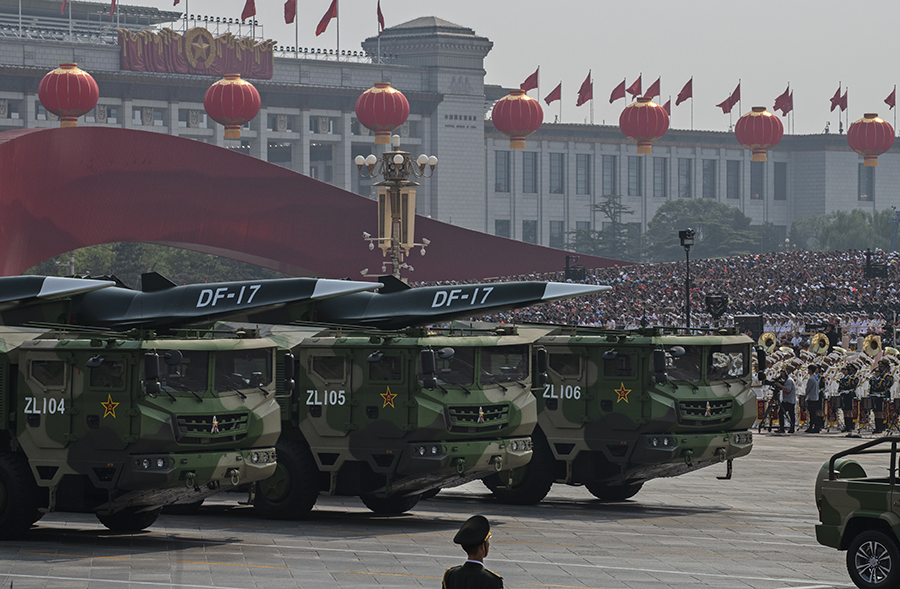 The U.S. Department of Defense estimates China’s deployed nuclear forces to number in the low 200s. Even if doubled, this is substantially lower than the approximately 1,500 deployed strategic nuclear forces the United States maintains on alert daily under the New Strategic Arms Reduction Treaty. Despite the rising numbers, China seems unlikely to quantitatively outpace U.S. nuclear forces in the foreseeable future.
The U.S. Department of Defense estimates China’s deployed nuclear forces to number in the low 200s. Even if doubled, this is substantially lower than the approximately 1,500 deployed strategic nuclear forces the United States maintains on alert daily under the New Strategic Arms Reduction Treaty. Despite the rising numbers, China seems unlikely to quantitatively outpace U.S. nuclear forces in the foreseeable future.
Nevertheless, China’s capabilities represent a substantial threat that must not be ignored. Quantitative comparisons of nuclear arsenals are a relatively crude manner of understanding nuclear risks and, in the case of the U.S.-Chinese relationship, wholly insufficient. More than ever, U.S. policymakers need to understand Chinese nuclear strategy. In the U.S.-Chinese context, policymakers should be more focused on how conventional weapons and related strategies could impact the nuclear calculus between the two countries.
Chinese Nuclear Strategy
Unlike Russia and the United States, China has found nuclear weapons to be of rather limited utility in war-fighting. It built what it describes as a “lean and effective” nuclear deterrent, with the intentions of deterring a nuclear attack and preventing nuclear coercion.1 Strategists in Beijing have long thought that the destructive force of nuclear weapons limits their utility, while conventional forces are more flexible and usable in conflict. Conventional forces are thought to be where wars are won or lost.2 In that sense, China’s nuclear forces are intended to check U.S. nuclear dominance while winning conventional conflicts at lower levels of escalation. To make that happen, China is seeking to build a nuclear force capable of surviving a nuclear first strike and retaliating with an unacceptable level of damage. Experts have perhaps best described China’s nuclear strategy as one of “assured retaliation.”3 Instead of seeking parity with other nuclear states and being able to engage in counterforce campaigns, China finds it sufficient to maintain a more modest, secure, and survivable force. If China can sufficiently absorb a first strike and retaliate, even with only a few warheads, Beijing believes an adversary is unlikely to decide that the risk of attacking China is worth the benefit.
Since China’s first nuclear test in 1964, it has consistently maintained a public, declaratory no-first-use policy, adhering to what it describes as a “self-defensive nuclear strategy” that would anticipate using nuclear weapons only as a “counterattack in self-defense.”4 Western analysts have rightfully pointed out that a no-first-use pledge may not be entirely credible on its own. Although the pledge may be sincerely held, during a crisis, escalation could be unpredictable. Additionally, a small number of Chinese analysts have suggested that what China defines as a counterattack may be ambiguous under certain, limited conditions, such as conventional attacks seeking to neutralize China’s nuclear forces.5
Despite Western doubts, the fact remains that Chinese strategists believe that the pledge holds true. An unambiguous no-first-use stance remains the official stance of the Chinese government, and China’s nuclear strategy is built around this concept. Authoritative texts on Chinese military thinking have described three major missions for Chinese nuclear forces. In peacetime, they seek to deter enemies from launching a nuclear war with China. In wartime, they constrain the scope of war, preventing a conventional conflict from escalating to a nuclear exchange. If war does escalate to nuclear conflict, they serve to conduct nuclear counterattacks.6 The texts consistently describe only one envisioned use of nuclear weapons, the nuclear counterattack operation, in response to a nuclear strike.7
Operational practices have reinforced this. Beijing maintains a highly centralized nuclear warhead storage and handling system, with warheads typically thought to be stored unmated from their delivery vehicles rather than loaded and ready for launch.8 Further, training for nuclear brigades reflects the practice of counterattacking under nuclear conditions. Yet, there are indications of evolution. Recent U.S. government reports have suggested that some People’s Liberation Army Rocket Force (PLARF) brigades may spend time on higher alert and may seek to shift to a launch-on-warning posture in the future in order to increase survivability under nuclear attack. China has been developing a space-based early-warning system with assistance from Russia that could support this.9
Nuclear Force Projections
As the U.S. annual threat assessment noted, there are signs of recent substantial changes in Chinese nuclear forces. The most important changes have been primarily qualitative, but notable quantitative changes are also occurring. These are understandably alarming to U.S. policymakers. Although the size of Chinese nuclear forces may still be dwarfed by the U.S. arsenal, its growth represents a substantial complication for the United States. Further, although the United States and Russia are modernizing their arsenals, they have been reducing their stockpiles over the past few decades slowly but significantly. China’s nuclear expansion represents a concerning shift away from its obligations under the nuclear Nonproliferation Treaty to reduce its arsenal, and that is likely to impact U.S. and Russian decision-making.
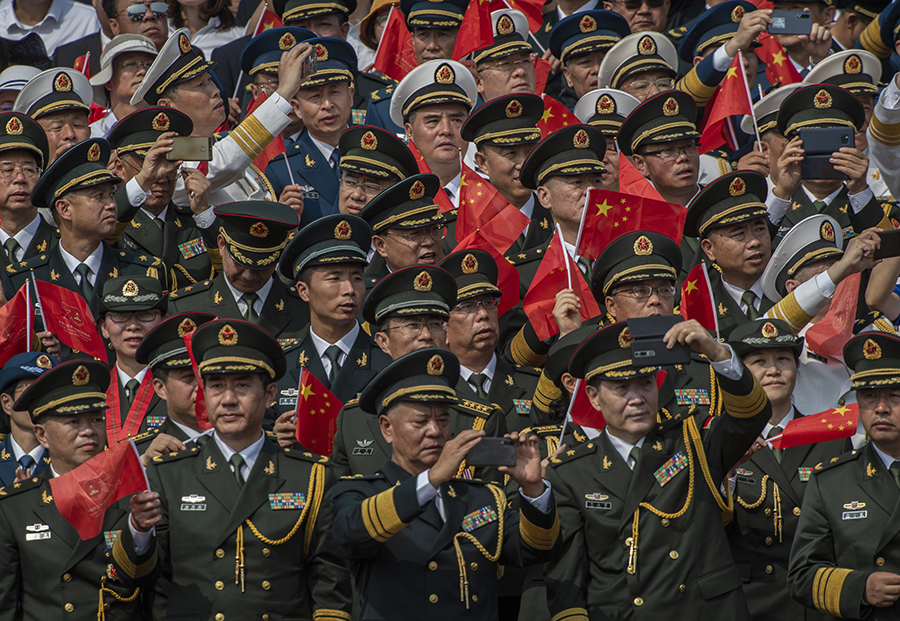 Yet, understanding these changes in the context of China’s nuclear strategy is important. Instead of trying to reach parity with or exceed the U.S. nuclear arsenal, China seems intent on ensuring that it has an assured retaliatory capability following U.S. strikes. Given U.S. nuclear and technological superiority, China likely has never had a sufficiently survivable nuclear deterrent against the United States, a goal that was more aspirational than anything else. Revolutions in intelligence, surveillance, and reconnaissance technologies, coupled with advances in conventional precision weapons, have long rendered China’s nuclear forces vulnerable. The U.S. ballistic missile defense program threatens to intercept any surviving retaliatory force, further jeopardizing China’s retaliatory capability.
Yet, understanding these changes in the context of China’s nuclear strategy is important. Instead of trying to reach parity with or exceed the U.S. nuclear arsenal, China seems intent on ensuring that it has an assured retaliatory capability following U.S. strikes. Given U.S. nuclear and technological superiority, China likely has never had a sufficiently survivable nuclear deterrent against the United States, a goal that was more aspirational than anything else. Revolutions in intelligence, surveillance, and reconnaissance technologies, coupled with advances in conventional precision weapons, have long rendered China’s nuclear forces vulnerable. The U.S. ballistic missile defense program threatens to intercept any surviving retaliatory force, further jeopardizing China’s retaliatory capability.
For the first time in history, the People’s Liberation Army (PLA) seems to be moving toward a survivable nuclear force capable of executing a second strike. Research suggests that Chinese nuclear expansions and modernization are oriented toward creation of a more mobile and redundant force that can survive U.S. counterforce capabilities, including conventional systems such as the Conventional Prompt Global Strike system, and its missiles being able to penetrate U.S. missile defense systems.10 Consequently, although China’s nuclear force size will expand, it does not appear likely to expand to the size of the U.S. nuclear arsenal in the near future.
There is understandable doubt about the claim of China doubling its nuclear arsenal, but it does not appear to be out of the question. China is fielding an increasing number of multiple independently targetable reentry vehicle weapons, such as the DF-5B deployed in 2015 and the recently deployed DF-5C and DF-41, that improve the ability of China’s intercontinental ballistic missile (ICBM) arsenal to penetrate the U.S. missile defense system.11 Defense Department estimates do not appear to include the DF-41, which is just starting to be deployed. Installing multiple warheads on these weapons will quickly expand the number of nuclear weapons in China’s arsenal. Further, PLARF brigades have been increasing at an unprecedented rate. The number of PLARF brigades reportedly increased from 29 to 40 between 2017 and 2020, and brigades continue to be added as new missile types are fielded.12
China’s shift to a nuclear triad will further increase the number of its nuclear warheads as these new systems are equipped. China is creating a more survivable nuclear submarine force, expanding the number of Type 094 ballistic missile submarines and developing the quieter Type 096 submarine with the JL-3 sea-launched ballistic missile as a complement. The PLA Air Force is also adopting a nuclear mission by developing a new air-launched ballistic missile that may be nuclear capable, as well as the nuclear-capable H-20 strategic bomber.13

Significantly, not all of China’s nuclear weapons are intercontinental forces capable of striking targets located in the continental United States. China has invested in nuclear weapons that specifically threaten the immediate region. Its new air capabilities, along with recently deployed midrange and intermediate-range ballistic missiles such as the DF-21E and the DF-26, hold regional adversaries and U.S. overseas bases at risk. China also recently deployed a new hypersonic glide vehicle, the DF-17, that may be nuclear capable. Importantly, although China’s nuclear expansion may be oriented toward a strategy of assured retaliation, that does not prevent Beijing from orienting its expanding nuclear capabilities toward a more threatening posture in the future. As China’s capabilities expand, its operational doctrine may well follow suit.
Emboldened Conventional Operations
China’s nuclear forces can be considerably more concerning when not considered in isolation from other tools of war. Analysts and policymakers need to look at how nuclear weapons can affect the broader picture of warfare, including how they impact PLA conventional operations and the type of wars China envisions fighting.
China’s military strategy is focused on “winning informationized local wars,” effectively local, high tech wars in which the information domain will play a dominant role. Although the PLA’s reach is increasingly global, it has oriented itself toward local conflicts, with a particular emphasis on maritime conflicts, as the main war-fighting domain. This primarily concerns Taiwan but also the East and South China seas among others.14 In 2015, the PLA made a drastic change to its command structure, orienting itself into joint war-fighting theater commands, directly geared to fighting in these regions. The PLA seeks to deter the United States from intervening in these local wars or to defeat the United States locally if it does.
In these local wars, nuclear overmatch against the United States is hardly necessary. Instead, China is more concerned with preventing U.S. nuclear coercion and intervention and constraining the scope of any war that may erupt. PLA strategists appear to believe that the United States would not intervene in a conflict that did not directly threaten the United States if there was a risk that the conflict could escalate to the nuclear level.15 As Zhao Xijun, former deputy commander of the Second Artillery Force, has said, states “become very cautious” when contemplating military intervention against other nuclear-armed states.16
Evidence suggests that a secure second-strike force may even embolden the PLA in local conventional conflicts, allowing them to accept greater risks at lower levels of escalation. That especially holds true when considering that all sides in China’s multiple territorial claims perceive themselves as defending the status quo.17 Research has revealed the PLA’s overconfidence in its ability to control conventional escalation. Unlike in the case of nuclear weapons, Chinese documents emphasize “seizing the initiative” early in conventional conflicts. They envision using tools such as cyberwarfare and conventional missiles early, hard, and fast, even preemptively.18 Although the focus of these writings is not nuclear weapons use, conventional operations could be emboldened by perceptions of nuclear stability.
Entanglement Risks
Another complication is that firebreaks between conventional and nuclear forces are increasingly blurred in modern warfare, and substantial risks exist when conventional strategies affect nuclear forces. One notable example involves discussions on space weapons. PLA assessments have highlighted the increasing importance of this domain, and the asymmetric weakness represented by U.S. overreliance on space in conflict. Critiques of Chinese military writings point toward the offense-dominant nature of such operations and the need to control the space domain early in conflict. They further assert that attacks against U.S. satellites would carry relatively low escalation risks and could even deescalate a conflict.19
U.S. satellite systems, however, are dual use, enabling a wide range of conventional and nuclear operations. Attacks against U.S. satellites would not only affect the country’s conventional capabilities, they would jeopardize the heart of the U.S. nuclear command, control, and communications and early-warning capabilities.20 Further, although Chinese military analysts highlight the advantages of engaging in satellite attacks during conventional conflicts, the same actions would likely be taken prior to a nuclear conflict in order to degrade the effectiveness of U.S. missile defenses and ensure the effectiveness of a nuclear strike. As a result, Washington would view any Chinese attack on its satellites as profoundly destabilizing, potentially inciting a U.S. nuclear response.
Similar entanglement risks exist with Chinese forces. PLARF bases all appear to host conventional and nuclear missile brigades. These are geographically separated from each other, but most of the weapons are on mobile platforms, creating overlapping risks when deployed. Conventional and nuclear forces seem to rely on the same supply and logistics infrastructure. Although command and control infrastructure are ostensibly separate, the extent of this separation is not fully understood, and overlap seems likely to exist.21 Additionally, China’s nuclear submarine force appears to share the same onshore communications systems with Chinese conventional submarines.22
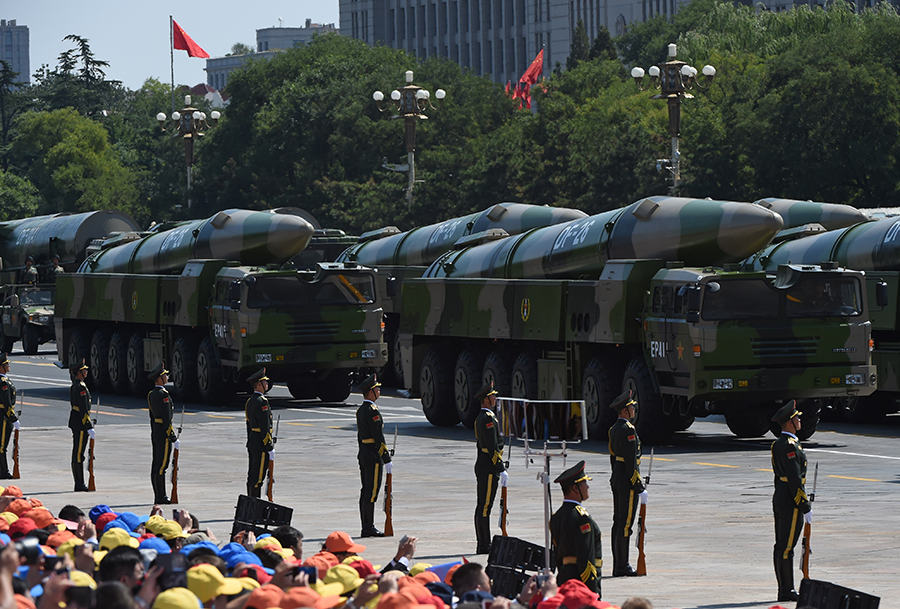 Furthermore, an increasing number of midrange to intermediate-range weapons systems are dual use. Although the DF-21 maintains distinct conventional and nuclear variants that are typically not co-located, they are likely indistinguishable when deployed. In the case of the DF-26, conventional and nuclear warheads are likely co-located. Reports have highlighted DF-26 brigades, equipped with conventional and nuclear weapons, that hold drills in which units launch a conventional attack and then reload with a nuclear warhead to prepare for nuclear counterattacks.23
Furthermore, an increasing number of midrange to intermediate-range weapons systems are dual use. Although the DF-21 maintains distinct conventional and nuclear variants that are typically not co-located, they are likely indistinguishable when deployed. In the case of the DF-26, conventional and nuclear warheads are likely co-located. Reports have highlighted DF-26 brigades, equipped with conventional and nuclear weapons, that hold drills in which units launch a conventional attack and then reload with a nuclear warhead to prepare for nuclear counterattacks.23
In conflict, attacks against China’s shore-based communications systems that are directed at China’s conventional submarine force would cut off its nuclear-armed submarine force as well. Campaigns against China’s vast conventional missile force would almost certainly degrade China’s nuclear force too. The fixed bases supporting PLARF brigades would be likely targets as the dual nature of these bases means conventional and nuclear forces share the same base headquarters, resulting in severed communications and logistics networks for PLA nuclear forces. Even if China’s nuclear and conventional command and control networks were sufficiently separate, it would be challenging to distinguish between them. Conventional and nuclear midrange to intermediate-range weapons would likely be indistinguishable in conflict.
How would China respond to attacks against these dual-use systems and the degradation of its nuclear force? It is somewhat comforting that China’s ICBM force is relatively distinguishable from its dual-use weapons, and the majority of the force is located deeper within the Chinese mainland. What is not obvious is how strikes against regional-range nuclear forces would be perceived by Beijing in the middle of armed conflict. If China’s nuclear forces were degraded in any way, authorities could conclude that they no longer have a survivable deterrent. In the heat of a conflict, it is difficult to assess how Chinese decision-makers would react to this.
Further, a degraded Chinese nuclear force, in the middle of a crisis, could provide a tempting counterforce target for the United States. In such a case, there would be a challenge of perceptions, with neither the United States nor China truly knowing the other’s intentions. In conflict, with the ability to destroy China’s nuclear force or at least limit damage to itself should China opt for nuclear use, would the United States decide that a counterforce strike is worth the risk? The United States would understand that if it failed to strike, China could opt to use its remaining nuclear forces and inflict substantial damage. Similarly, knowing the United States faced such a dilemma and that it could face a disabling counterforce strike, China would be faced with strong use-it-or-lose-it pressures. All of these circumstances would be exacerbated by the fog of war, a degraded information environment, and the speed required to make decisions.
Some Western analysts have speculated that China’s conventional and nuclear weapons capabilities have been intentionally entangled to heighten the risks facing adversaries and to deter conflict. There is little evidence that this was a motivator. Instead, the PLA likely sought to take advantage of economies of scale. It is far cheaper and more logical for China to use the same designs for conventional and nuclear variants to its weapons, allowing for savings on manpower, production, maintenance, and research costs. Even so, this is hardly comforting and may leave the PLA less aware of risks resulting from a comingled system. States that entangle forces intentionally are likely better prepared for the risks involved. When such entanglement arises from nonstrategic reasons, as seems likely in China’s case, states are less aware of the escalatory risks, which may exacerbate escalatory pressures in a conflict.24
War Control and Inadvertent Escalation
There is little evidence that technological entanglement is a direct, strategic choice, but there are some limited indications that China could use nuclear signaling to constrain the extent of conventional conflicts and contribute to escalation control.25 Nuclear signaling includes such actions as test launches, release of the locations of targets, an increase in readiness levels, missile deployments, or other actions to demonstrate resolve. The goal would not be necessarily to use nuclear weapons. Instead, the signaling would aim to raise fears that a conflict could credibly escalate to the nuclear level, thus “causing the enemy to dread that the possible consequences of its actions will be that its losses will exceed its gains, thereby causing the enemy to change its plans for risky activities and achieving the goal of restricting the war to a certain scope.”26 In this way, China could capitalize on the uncertainty of a potential nuclear conflict to deter intervention and constrain escalation in conventional conflicts in the Pacific region. Such risks are compounded by China’s use of purposeful ambiguity as an integral component of its approach to nuclear deterrence.27
One major problem is that such signaling by the Chinese may be indistinguishable from preparations for a nuclear attack. Yet, writings by experts on deterrence and signaling operations fail to acknowledge that these provocative actions could be misinterpreted by an adversary. In general, Chinese experts seem to believe that nuclear escalation is unlikely to be effectively controlled, but are overconfident that conventional conflict can be controlled without escalating to the nuclear level.28 Lack of awareness about escalation risks could very well make the PLA more aggressive in local conflicts.
Finally, the concept of an “existential threat” may be different in China than many perceive it to be. The PLA is not China’s professional military so much as it is the armed wing of the Chinese Communist Party, a point drilled into PLA members and emphasized in the era of Chinese President Xi Jinping, who is also general secretary of the party.29 In that sense, destruction of the party may be synonymous with destruction of the state. Such conflation of ideas could come into play in the face of a humiliating conventional defeat by China over Taiwan or another dispute that China considers central to its sovereignty. If there were a perceived risk, irrational or not, that such losses could fracture the legitimacy of the Communist Party, drastic actions could become more likely. If Beijing perceived that nuclear weapons use would ensure victory in a conflict, it might escalate to using nuclear weapons in a last-ditch effort.
Conclusion
For all the concern from U.S. policymakers about China’s nuclear expansion, relatively little attention has gone into adequately examining the country’s military and nuclear strategies. There is a tendency among many U.S. policymakers to blindly equate the challenge of China with the strategies faced by the United States and the Soviet Union during the Cold War or to mirror image their own strategic thinking onto Chinese strategists. That is insufficient and dangerous.
China’s thinking on escalation and war-fighting often differs substantially from that of the Americans and Soviets. The authoritative literature on these subjects within the Chinese system does not represent errant thoughts of lone strategists. It represents doctrinally informed guidance that culminates the work of dozens of China’s top strategists, originating from China’s most authoritative institutions with ties directly to China’s decision-making bodies, and is used to educate and inform PLA officers. Although written for an internal audience, several of the most important of these texts, such as “Science of Military Strategy” and “Science of Campaigns,” have been translated into English by U.S. scholars and need to be mined thoroughly by U.S. planners for insights.30
There is also a need for greater engagement and crisis management measures between U.S. and Chinese officials. Varying levels of formal and informal dialogues between Chinese and U.S. officials directly or between delegations of recently retired officials help alleviate misperceptions and enhance understanding of escalation triggers and redlines. Although there have been some talks at the unofficial level in recent years, Beijing remains reluctant to pursue official talks on nuclear weapons. Given the substantial misperceptions in the relationship, regular engagements are critical. Similarly, crisis management mechanisms would be to the advantage of both sides in communicating intentions and alleviating misperceptions during a crisis. Thus far, the pursuit of new initiatives has met limited success, and Beijing tends to eschew the methods that are in place. Although arms control agreements appear to be unfeasible between the United States and China for the time being, official talks and better crisis management measures would be a strong first step.
Finally, the United States needs to look at deterrence and escalation more holistically. The primary risks of nuclear escalation stemming from the U.S.-Chinese relationship do not come from nuclear weapons alone. Warfare is increasingly complicated; a greater appreciation of how conventional and nuclear strategies intersect is needed. In the Indo-Pacific theater, conventional forces may play a greater role in deterrence than many in the nuclear community acknowledge. U.S. Admiral Phil Davison, commander of the U.S. Indo-Pacific Command, recently observed that “the greatest danger the United States and our allies face in the region is the erosion of conventional deterrence vis-à-vis the People’s Republic of China.” Increasingly, this erosion affects conventional and nuclear strategies. Organizational separation within the U.S. military establishment may leave conventional and nuclear planners ill-informed of escalation risks stemming from areas outside their purview. Better integration of conventional and nuclear communities, a more holistic understanding of the risks and challenges, and a bolstering of regional conventional forces could play a significant role in managing and deterring conflict that could otherwise escalate to the nuclear level.
Endnotes
1. M. Taylor Fravel, Active Defense: China’s Military Strategy Since 1949 (Princeton, NJ: Princeton University Press, 2019), pp. 243–247.
2. Michael Chase, “PLA Rocket Force: Executors of China’s Nuclear Strategy and Policy,” in China’s Evolving Military Strategy, ed. Joe McReynolds (Washington: The Jamestown Foundation, 2017), p. 144; Liu Chong, “The Relationship Between Nuclear Weapons and Conventional Military Conflicts,” in Understanding Chinese Nuclear Thinking, ed. Li Bin and Tong Zhao (Washington: Carnegie Endowment for International Peace (CEIP), 2016), pp. 153–159.
3. M. Taylor Fravel and Evan S. Medeiros, “China’s Search for Assured Retaliation: The Evolution of Chinese Nuclear Strategy and Force Structure,” International Security, Vol. 35, No. 2 (Fall 2010): 48-87; Fiona S. Cunningham and M. Taylor Fravel, “Assuring Assured Retaliation: China’s Nuclear Posture and U.S.-China Strategic Stability,” International Security, Vol. 40, No. 2 (October 2015): 7–50.
4. Information Office of the State Council of the People’s Republic of China, “China’s National Defense in 2006,” December 2006, http://www.andrewerickson.com/wp-content/uploads/2019/07/China-Defense-White-Paper_2006_English-Chinese_Annotated.pdf.
5. Christopher P. Twomey, “China’s Nuclear Doctrine and Deterrence Concept,” in China’s Strategic Arsenal: Worldview, Doctrine, and Systems, ed. James M. Smith and Paul J. Bolt (Washington: Georgetown University Press, 2021), pp. 51–55.
6. Chase, “PLA Rocket Force,” p. 142; Fravel, Active Defense, p. 242.
7. Cunningham and Fravel, “Assuring Assured Retaliation,” pp. 12–15; Chase, “PLA Rocket Force,” pp. 148–149.
8. Mark A. Stokes, “China’s Nuclear Warhead Storage and Handling System, ” Project 2049 Institute, March 12, 2010, https://project2049.net/wp-content/uploads/2018/05/chinas_nuclear_warhead_storage_and_handling_system.pdf.
9. U.S. Office of the Secretary of Defense, “Military and Security Developments Involving the People’s Republic of China,” 2020, pp. 88-89, https://media.defense.gov/2020/Sep/01/2002488689/-1/-1/1/2020-DOD-CHINA-MILITARY-POWER-REPORT-FINAL.PDF.
10. Cunningham and Fravel, “Assuring Assured Retaliation,” pp. 15–23.
11. Hans M. Kristensen and Matt Korda, “Chinese Nuclear Forces, 2020,” Bulletin of the Atomic Scientists, Vol. 76, No. 6 (November 1, 2020): 445.
12. P.W. Singer and Ma Xiu, “China’s Missile Force Is Growing at an Unprecedented Rate,” Popular Science, February 25, 2020.
13. Hans M. Kristensen, “China’s Strategic Systems and Programs,” in China’s Strategic Arsenal: Worldview, Doctrine, and Systems, ed. James M. Smith and Paul J. Bolt (Washington: Georgetown University Press, 2021), pp. 108–112.
14. M. Taylor Fravel, “China’s New Military Strategy: ‘Winning Informationized Local Wars,’” China Brief, Vol. 15, No. 13 (July 2, 2015): 3–7.
15. M. Taylor Fravel and Fiona Cunningham, “Dangerous Confidence: Chinese Views on Nuclear Escalation,” International Security, Vol. 44, No. 2 (Fall 2019): 79–81.
16. Eric Heginbotham et al., “China’s Evolving Nuclear Deterrent: Major Drivers and Issues for the United States,” RAND Corp., 2017, pp. 17–18, https://www.rand.org/pubs/research_reports/RR1628.html.
17. Thomas J. Christensen, “The Meaning of the Nuclear Evolution: China’s Strategic Modernization and U.S.-China Security Relations,” Journal of Strategic Studies, Vol. 35, No. 4 (August 29, 2012): 463–466.
18. Burgess Laird, “War Control: Chinese Writings on the Control of Escalation in Crisis and Conflict,” Center for a New American Security, 2017, https://www.cnas.org/publications/reports/war-control; Alison A. Kaufman and Daniel M. Hartnett, “Managing Conflict: Examining Recent PLA Writings on Escalation Control,” CNA, February 2016, pp. 81–82, https://www.cna.org/cna_files/pdf/DRM-2015-U-009963-Final3.pdf.
19. Kevin Pollpeter, “Space, the New Domain: Space Operations and Chinese Military Reforms,” Journal of Strategic Studies, Vol. 39, Nos. 5-6 (September 18, 2016): 709–727; Zhao Tong and Bin Li, “The Underappreciated Risks of Entanglement: A Chinese Perspective,” in Entanglement: Russian and Chinese Perspectives on Non-Nuclear Weapons and Nuclear Risks, ed. James M. Acton (Washington: CEIP, 2017), pp. 63–66; Laird, “War Control,” pp. 17–19. For a Track 1.5 talk between U.S. and Chinese officials in which anti-satellite strikes were proposed to deescalate conflict, see David Santoro and Robert Gromoll, “On the Value of Nuclear Dialogue With China: A Review and Assessment of the Track 1.5 ‘China-U.S. Strategic Nuclear Dynamics Dialogue,’” Issues and Insights, Vol. 20, No. 1 (November 2020): 19.
20. James M. Acton, “Escalation Through Entanglement: How the Vulnerability of Command-and-Control Systems Raises the Risks of an Inadvertent Nuclear War,” International Security, Vol. 43, No. 1 (August 2018): 63–66.
21. Caitlin Talmadge, “Would China Go Nuclear? Assessing the Risk of Chinese Nuclear Escalation in a Conventional War With the United States,” International Security, Vol. 41, No. 4 (April 2017): 73–79.
22. Zhao Tong, “Tides of Change: China’s Nuclear Ballistic Missile Submarines and Strategic Stability,” CEIP, 2018, pp. 42–43, 83-84, https://carnegieendowment.org/files/Zhao_SSBN_final.pdf.
23. Joshua Pollack and Scott LaFoy, “China’s DF-26: A Hot-Swappable Missile?” Arms Control Wonk, May 17, 2020, https://www.armscontrolwonk.com/archive/1209405/chinas-df-26-a-hot-swappable-missile/.
24. David C. Logan, “Are They Reading Schelling in Beijing? The Dimensions, Drivers, and Risks of Nuclear-Conventional Entanglement in China,” Journal of Strategic Studies, November 12, 2020, pp. 30–38.
25. Christopher T. Yeaw, Andrew S. Erickson, and Michael S. Chase, “The Future of Chinese Nuclear Policy and Strategy,” in Strategy in the Second Nuclear Age, ed. Toshi Yoshihara and James R. Holmes (Washington: Georgetown University Press, 2012), pp. 53–64; Heginbotham et al., “China’s Evolving Nuclear Deterrent,” pp. 26–31.
26. Yu Jixun, ed., Science of Second Artillery Campaigns (Beijing: PLA Press, 2004), pp. 273–274 (in Chinese).
27. Chase, “PLA Rocket Force,” p. 156.
28. Fravel and Cunningham, “Dangerous Confidence,” pp. 101–104.
29. David Finkelstein, “Breaking the Paradigm: Drivers Behind the PLA’s Current Period of Reform,” in Chairman Xi Remakes the PLA: Assessing Chinese Military Reforms, ed. Phillip C. Saunders et al. (Washington: National Defense University Press, 2019), pp. 48–51.
30. See China Aerospace Studies Institute (CASI), “Science of Military Strategy (2013),” In Their Own Words, n.d., https://www.airuniversity.af.edu/Portals/10/CASI/documents/Translations/2021-02-08%20Chinese%20Military%20Thoughts-%20In%20their%20own%20words%20Science%20of%20Military%20Strategy%202013.pdf; CASI, “Science of Campaigns (2006),” In Their Own Words, n.d., https://www.airuniversity.af.edu/Portals/10/CASI/documents/Translations/2020-12-02%20In%20Their%20Own%20Words-%20Science%20of%20Campaigns%20(2006).pdf. Additionally, for an excellent assessment by U.S. scholars of “Science of Military Strategy (2013)” and related texts, see Joe McReynolds, ed., China’s Evolving Military Strategy (Washington: The Jamestown Foundation, 2017).
Gerald C. Brown is an analyst with Valiant Integrated Services focusing on nuclear deterrence and East Asian security.
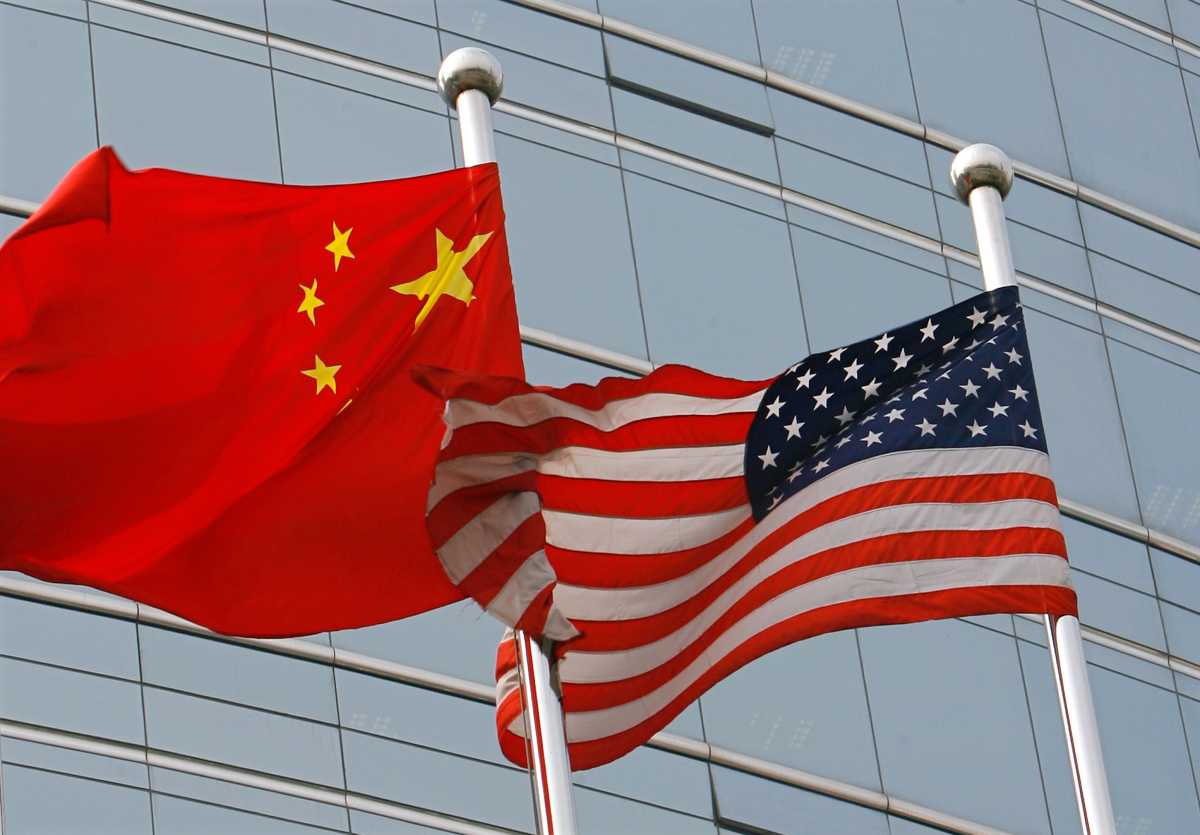 “There is a real possibility that a regional crisis with Russia or China could escalate quickly to a conflict involving nuclear weapons, if they perceived a conventional loss would threaten the regime or state,” Adm. Charles Richard, head of U.S. Strategic Command, warned in February.
“There is a real possibility that a regional crisis with Russia or China could escalate quickly to a conflict involving nuclear weapons, if they perceived a conventional loss would threaten the regime or state,” Adm. Charles Richard, head of U.S. Strategic Command, warned in February.





 The U.S. Department of Defense estimates China’s deployed nuclear forces to number in the low 200s. Even if doubled, this is substantially lower than the approximately 1,500 deployed strategic nuclear forces the United States maintains on alert daily under the New Strategic Arms Reduction Treaty. Despite the rising numbers, China seems unlikely to quantitatively outpace U.S. nuclear forces in the foreseeable future.
The U.S. Department of Defense estimates China’s deployed nuclear forces to number in the low 200s. Even if doubled, this is substantially lower than the approximately 1,500 deployed strategic nuclear forces the United States maintains on alert daily under the New Strategic Arms Reduction Treaty. Despite the rising numbers, China seems unlikely to quantitatively outpace U.S. nuclear forces in the foreseeable future. Yet, understanding these changes in the context of China’s nuclear strategy is important. Instead of trying to reach parity with or exceed the U.S. nuclear arsenal, China seems intent on ensuring that it has an assured retaliatory capability following U.S. strikes. Given U.S. nuclear and technological superiority, China likely has never had a sufficiently survivable nuclear deterrent against the United States, a goal that was more aspirational than anything else. Revolutions in intelligence, surveillance, and reconnaissance technologies, coupled with advances in conventional precision weapons, have long rendered China’s nuclear forces vulnerable. The U.S. ballistic missile defense program threatens to intercept any surviving retaliatory force, further jeopardizing China’s retaliatory capability.
Yet, understanding these changes in the context of China’s nuclear strategy is important. Instead of trying to reach parity with or exceed the U.S. nuclear arsenal, China seems intent on ensuring that it has an assured retaliatory capability following U.S. strikes. Given U.S. nuclear and technological superiority, China likely has never had a sufficiently survivable nuclear deterrent against the United States, a goal that was more aspirational than anything else. Revolutions in intelligence, surveillance, and reconnaissance technologies, coupled with advances in conventional precision weapons, have long rendered China’s nuclear forces vulnerable. The U.S. ballistic missile defense program threatens to intercept any surviving retaliatory force, further jeopardizing China’s retaliatory capability.
 Furthermore, an increasing number of midrange to intermediate-range weapons systems are dual use. Although the DF-21 maintains distinct conventional and nuclear variants that are typically not co-located, they are likely indistinguishable when deployed. In the case of the DF-26, conventional and nuclear warheads are likely co-located. Reports have highlighted DF-26 brigades, equipped with conventional and nuclear weapons, that hold drills in which units launch a conventional attack and then reload with a nuclear warhead to prepare for nuclear counterattacks.
Furthermore, an increasing number of midrange to intermediate-range weapons systems are dual use. Although the DF-21 maintains distinct conventional and nuclear variants that are typically not co-located, they are likely indistinguishable when deployed. In the case of the DF-26, conventional and nuclear warheads are likely co-located. Reports have highlighted DF-26 brigades, equipped with conventional and nuclear weapons, that hold drills in which units launch a conventional attack and then reload with a nuclear warhead to prepare for nuclear counterattacks.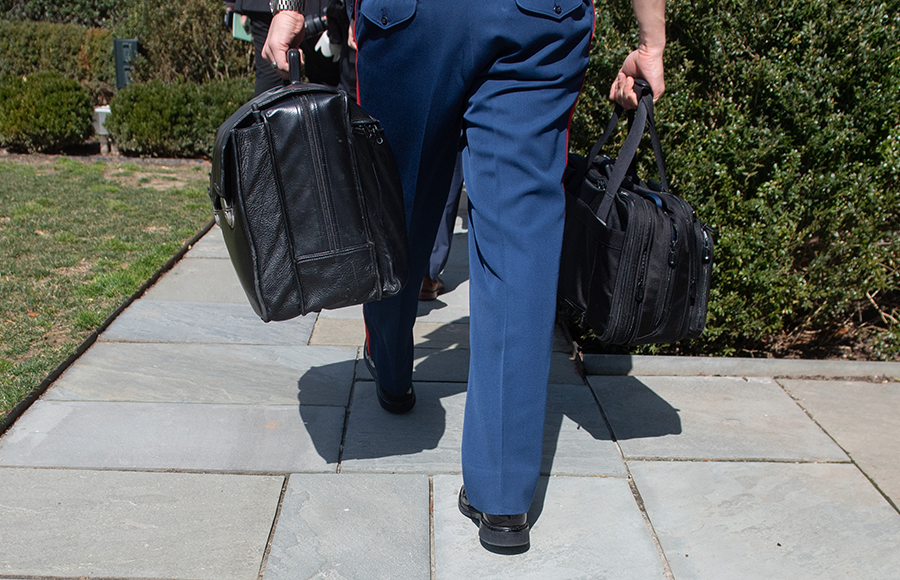 Calls for sharing this authority escalated during the last administration, when President Donald Trump made a habit of unilaterally changing national policy at the speed of a tweet. The calls have continued into the Biden presidency,
Calls for sharing this authority escalated during the last administration, when President Donald Trump made a habit of unilaterally changing national policy at the speed of a tweet. The calls have continued into the Biden presidency,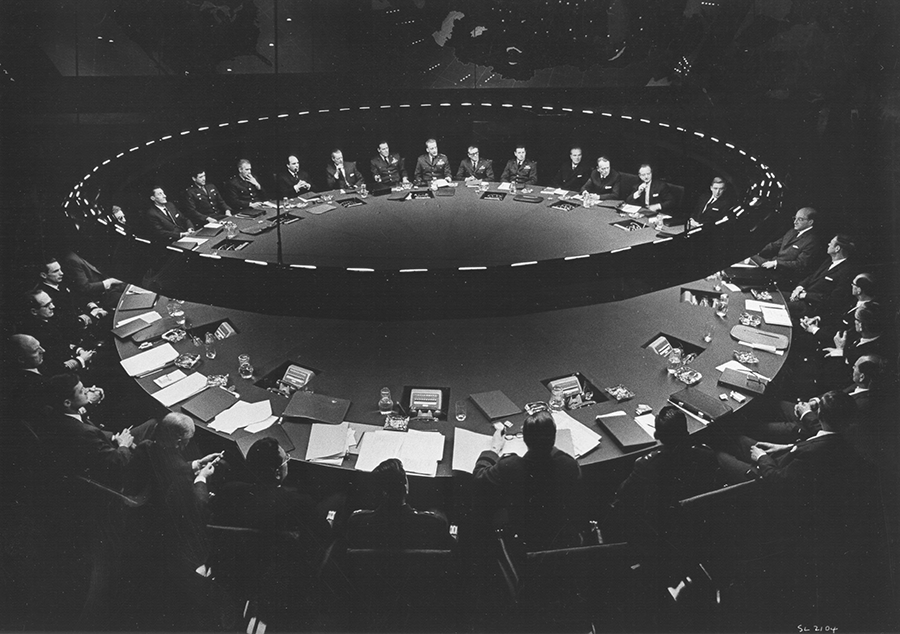
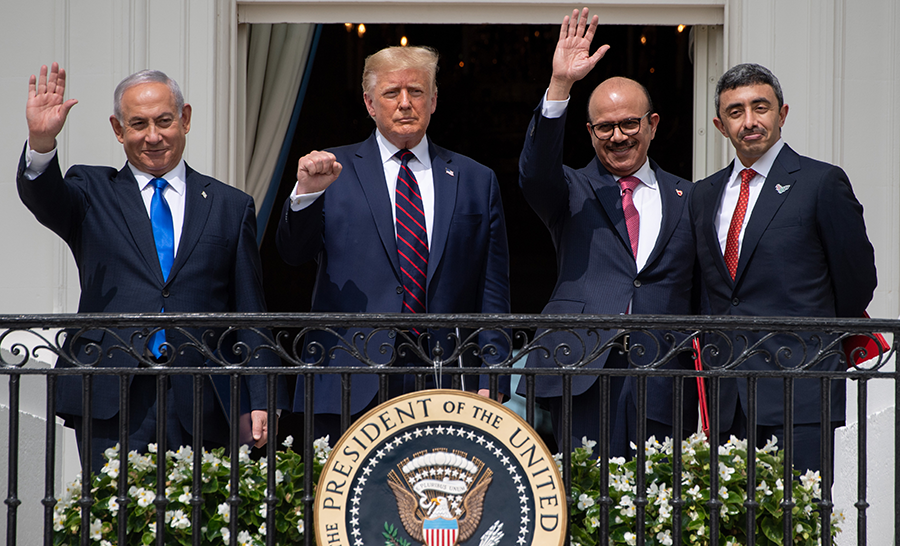 The Abraham Accords formalized new relations between Israel and several Arab countries. Talks on restoring the Iran nuclear deal, formally known as the Joint Comprehensive Plan of Action (JCPOA), are making headway while Iran and Saudi Arabia have resumed bilateral engagement thanks to mediation by Iraq. A return to full compliance with the JCPOA by the United States and Iran could be followed by broader discussions on regional security and missile programs.
The Abraham Accords formalized new relations between Israel and several Arab countries. Talks on restoring the Iran nuclear deal, formally known as the Joint Comprehensive Plan of Action (JCPOA), are making headway while Iran and Saudi Arabia have resumed bilateral engagement thanks to mediation by Iraq. A return to full compliance with the JCPOA by the United States and Iran could be followed by broader discussions on regional security and missile programs. 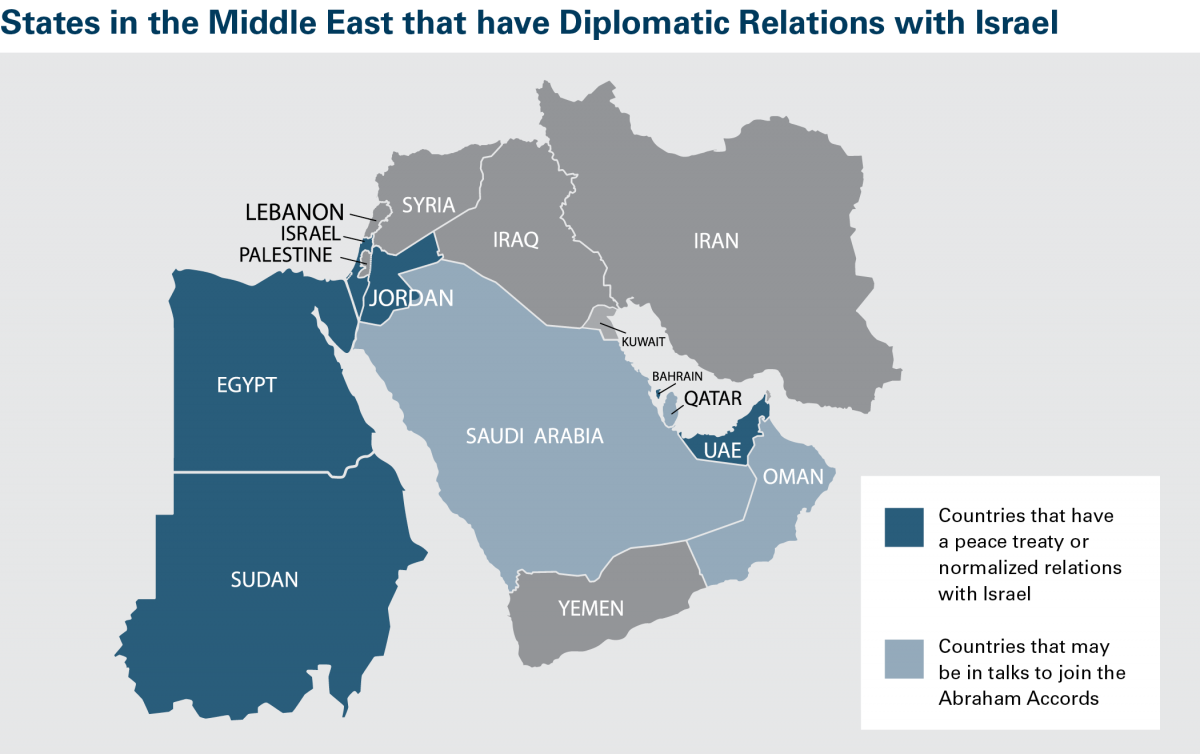
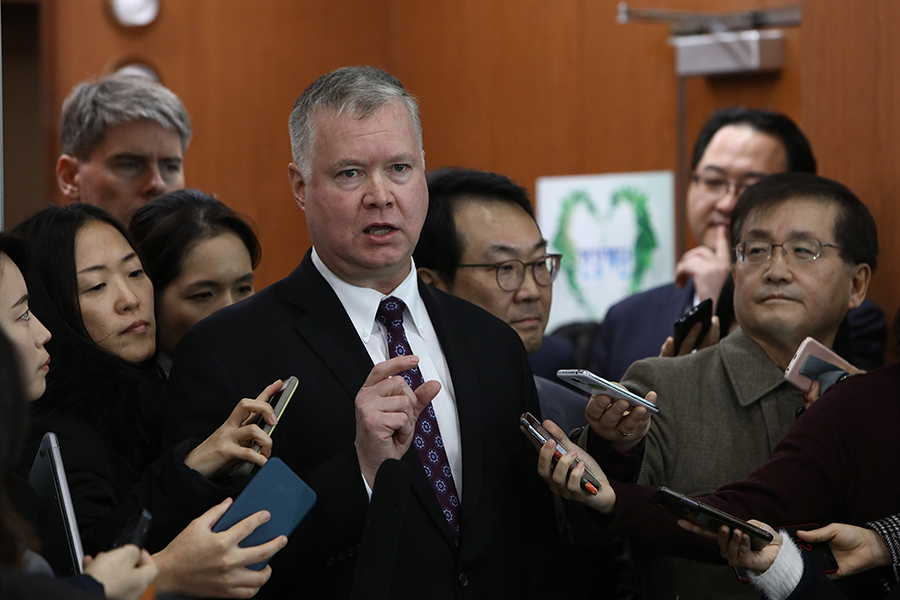 Stephen Biegun: The administration has begun to roll out its recent policy review, and so we're starting to understand how they intend to proceed. During the transition between the two administrations, we did a very thorough, deep dive on a number of issues, but none more so than North Korea. As the former special representative for North Korea, I and my team sat down with President-elect Joe Biden's team to walk them through where we were and really to share almost every detail of our interactions with the North Koreans, certainly everything that was available to us. It looks to me like the Biden policy is largely a continuation of what the negotiating team in the [Trump] State Department was trying to attain from the North Koreans, which is an agreement on a path toward denuclearization with a certain endpoint that is complete denuclearization but that we can structure along the way with some flexibility. We wanted to move in parallel on other things that might help open the aperture for progress like people-to-people exchanges, greater transparency, and confidence building on the Korean peninsula. I think the Biden administration's conclusions are logical and, frankly, are the best among the choices that are available to any administration.
Stephen Biegun: The administration has begun to roll out its recent policy review, and so we're starting to understand how they intend to proceed. During the transition between the two administrations, we did a very thorough, deep dive on a number of issues, but none more so than North Korea. As the former special representative for North Korea, I and my team sat down with President-elect Joe Biden's team to walk them through where we were and really to share almost every detail of our interactions with the North Koreans, certainly everything that was available to us. It looks to me like the Biden policy is largely a continuation of what the negotiating team in the [Trump] State Department was trying to attain from the North Koreans, which is an agreement on a path toward denuclearization with a certain endpoint that is complete denuclearization but that we can structure along the way with some flexibility. We wanted to move in parallel on other things that might help open the aperture for progress like people-to-people exchanges, greater transparency, and confidence building on the Korean peninsula. I think the Biden administration's conclusions are logical and, frankly, are the best among the choices that are available to any administration. 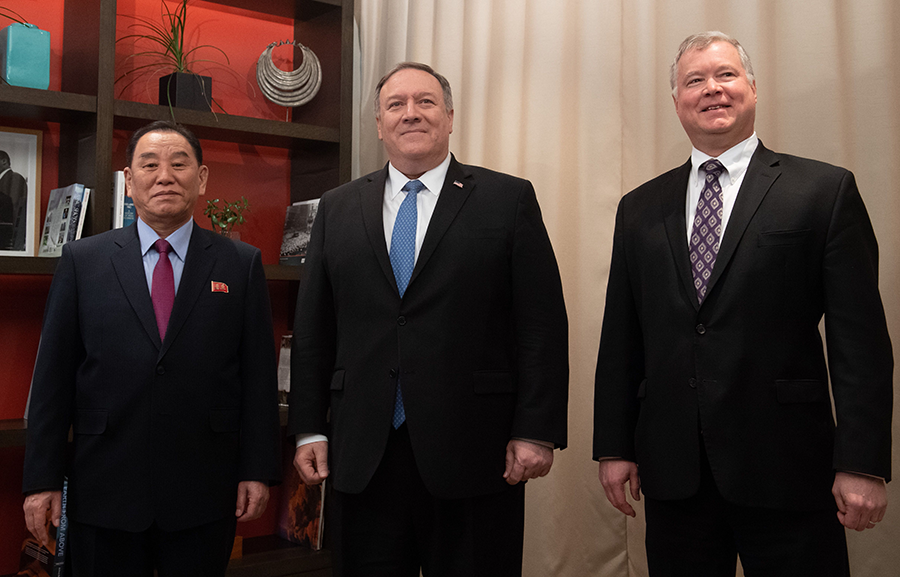 ACT: Do you still think a negotiated settlement with North Korea is possible?
ACT: Do you still think a negotiated settlement with North Korea is possible? 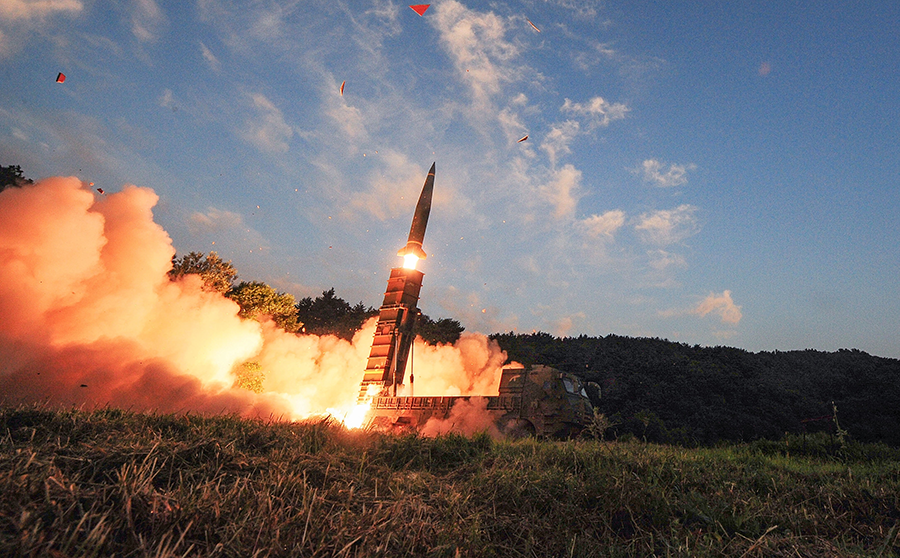 In an April 19 statement, the nonproliferation directors for the Group of Seven (G7) countries expressed grave concern over the “accelerating proliferation of ballistic and other missile technologies, including at the hands of non-state actors.” The spread of these systems is a “threat to regional and global security,” the statement said.
In an April 19 statement, the nonproliferation directors for the Group of Seven (G7) countries expressed grave concern over the “accelerating proliferation of ballistic and other missile technologies, including at the hands of non-state actors.” The spread of these systems is a “threat to regional and global security,” the statement said. 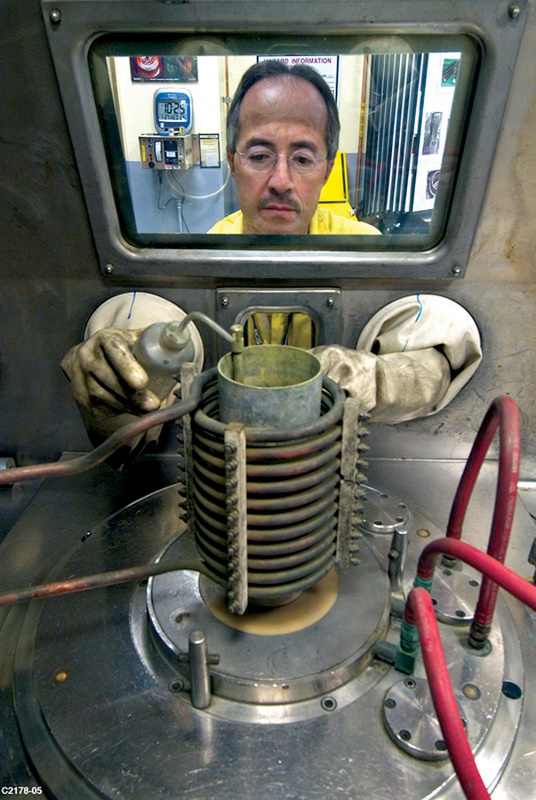 The updated price tag is nearly two and half times larger than earlier projections and is likely to raise fresh doubts about the affordability of the department’s aggressive plans to sustain and modernize U.S. nuclear warheads and their supporting infrastructure.
The updated price tag is nearly two and half times larger than earlier projections and is likely to raise fresh doubts about the affordability of the department’s aggressive plans to sustain and modernize U.S. nuclear warheads and their supporting infrastructure. 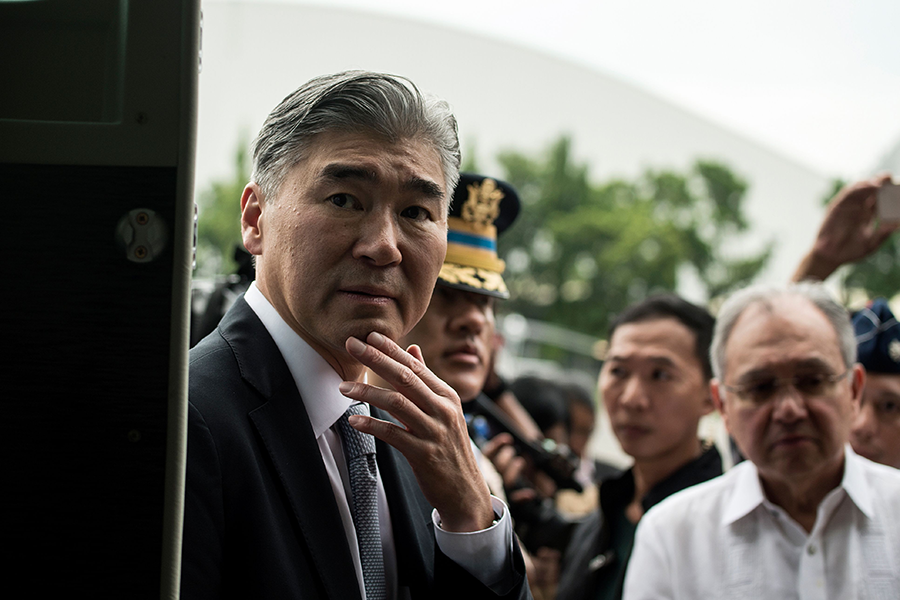 Hosting South Korean President Moon Jae-in at the White House on May 21, Biden told a news conference that the United States and South Korea “share a willingness to engage diplomatically with [North Korea] to take pragmatic steps that will reduce tensions as we move toward our ultimate goal of denuclearization of the Korean peninsula.”
Hosting South Korean President Moon Jae-in at the White House on May 21, Biden told a news conference that the United States and South Korea “share a willingness to engage diplomatically with [North Korea] to take pragmatic steps that will reduce tensions as we move toward our ultimate goal of denuclearization of the Korean peninsula.”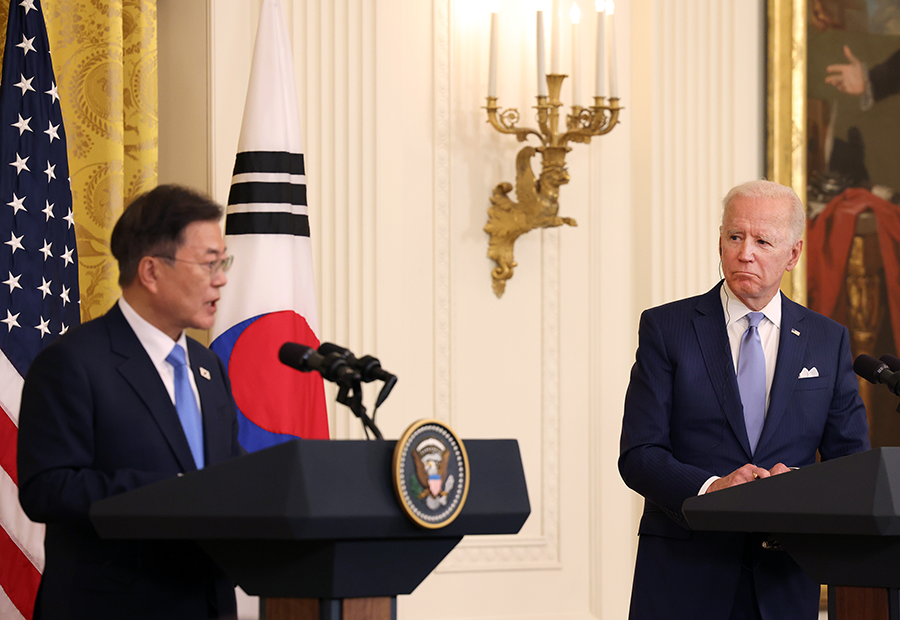 The move, long sought by Seoul, will affect the regional security dynamic in Asia by expanding South Korea’s missile and space force capabilities. It is also expected to further contribute to a rebalancing of the military relationship between the two long-time allies.
The move, long sought by Seoul, will affect the regional security dynamic in Asia by expanding South Korea’s missile and space force capabilities. It is also expected to further contribute to a rebalancing of the military relationship between the two long-time allies. The CBO report, published May 24, includes the projected costs to sustain and modernize U.S. delivery vehicles, warheads, and their associated infrastructure across a range of programs that are managed by the Defense Department and the Energy Department’s semiautonomous National Nuclear Security Administration (NNSA). The report estimates that the $634 billion in planned spending in fiscal years 2021–2030 will consume 6.0–8.5 percent of projected total spending on national defense during those years.
The CBO report, published May 24, includes the projected costs to sustain and modernize U.S. delivery vehicles, warheads, and their associated infrastructure across a range of programs that are managed by the Defense Department and the Energy Department’s semiautonomous National Nuclear Security Administration (NNSA). The report estimates that the $634 billion in planned spending in fiscal years 2021–2030 will consume 6.0–8.5 percent of projected total spending on national defense during those years.